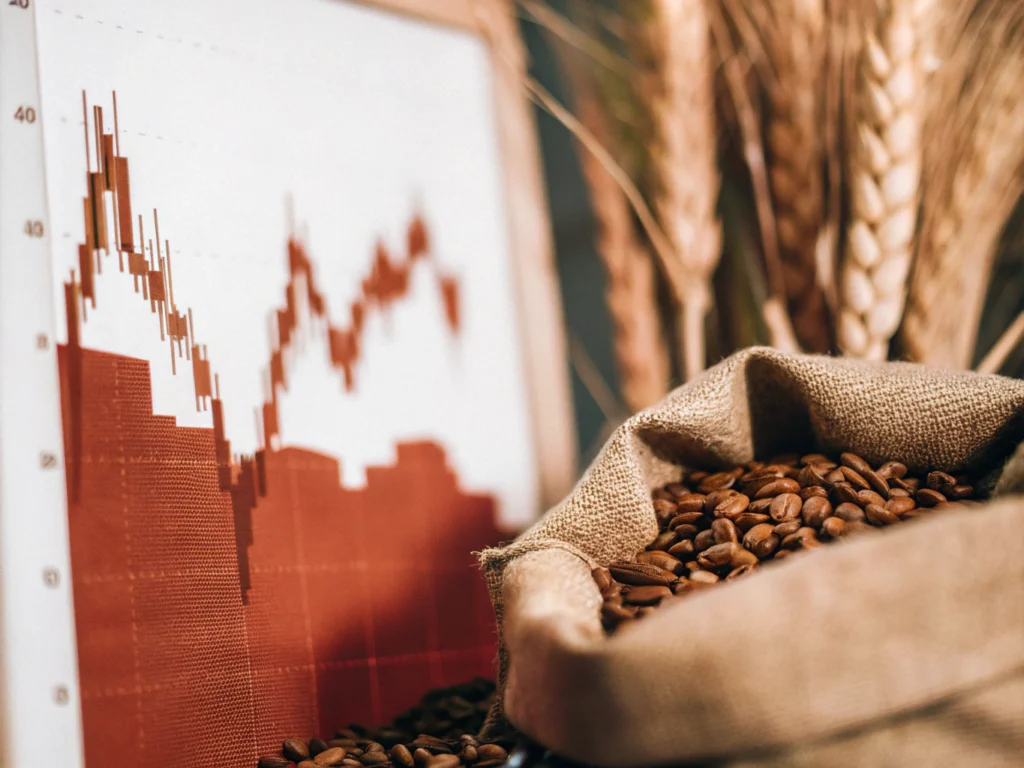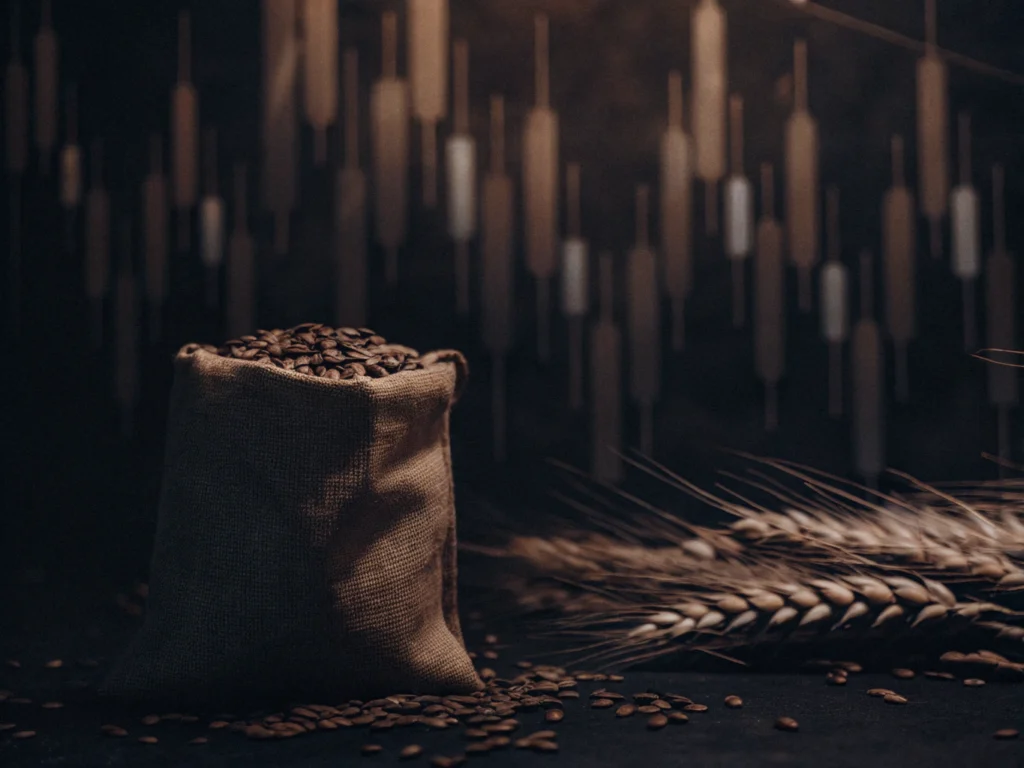
Understanding Soft Commodities Trading
Soft commodities are agricultural or livestock products that are grown rather than mined, playing a vital role in global consumption and trade. Their prices often reflect seasonality, weather patterns, and changing consumer tastes, making them both lucrative and challenging for speculators and hedgers alike.
Definition and Market Scope
Soft commodities encompass items such as coffee, cocoa, cotton, and sugar—each with its own production cycle and end-use markets. Unlike crude oil or metals (“hard” commodities), these goods are perishable, subject to storage constraints, and influenced by biological growth factors.
Major Soft Commodities (Coffee, Cocoa, Cotton, Sugar)
| Commodity | Primary Producers | End-Use Industries |
| Coffee | Brazil, Vietnam, Colombia | Beverage, food processing |
| Cocoa | Ivory Coast, Ghana, Indonesia | Confectionery, cosmetics |
| Cotton | China, India, USA | Textiles, apparel, home furnishings |
| Sugar | Brazil, India, Thailand | Food & beverage, biofuels |
Soft vs. Hard Commodities: Key Differences
- Shelf Life: Soft goods may spoil or degrade over time; metals and energy fuels do not.
- Supply Dynamics: Agricultural output depends on planting cycles; mining output can often be scaled more predictably.
- Price Drivers: Weather and pests dominate soft-commodity swings, while geopolitics and industrial demand shape hard-commodity moves.
Drivers of Volatility in Soft Commodities
Price fluctuations in crops and related products can be extreme, offering opportunity but also substantial risk. Recognizing the root causes of these swings is essential for any market participant.
Climate Events and Seasonal Cycles
Droughts, hurricanes, and unseasonal frost can decimate yields, triggering rapid price surges. For example, a dry spell in Brazil during coffee flowering can reduce harvests months later, often months before physical shortages are evident.
Shifting Global Demand and Supply Shocks
Emerging-market growth drives consumption spikes—consider China’s surging cotton imports—while export restrictions (e.g., sugar quotas) can suddenly tighten global availability. Traders must monitor policy shifts and consumption trends to anticipate these shocks.
Geopolitical and Economic Influences
Trade tariffs, currency fluctuations, and farm-subsidy debates in major producing countries all ripple through supply chains. Even stockpile releases by governments (e.g., cocoa reserves) can dampen or intensify price moves unexpectedly.

Proven Soft Commodities Trading Strategies
Successful operators blend technical insight, statistical models, and prudent money management to exploit recurring patterns and anomalies.
Trend-Following and Momentum Tactics
By tracking moving-average crossovers or momentum oscillators (e.g., RSI, MACD), traders can align with sustained price moves—buying strength in uptrends or shorting during persistent declines.
Spread-Trading and Arbitrage Techniques
Calendar spreads (long one delivery month, short another) capture seasonal roll-yield, while inter-commodity spreads (e.g., cotton vs. wool) exploit relative value mispricings.
Hedging with Futures and Options
Producers often lock in prices via futures contracts, while speculators layer on options to target asymmetric payoffs—buying calls ahead of harvest or purchasing puts to guard against unexpected storms.
Robust Risk Management and Position Sizing
Limiting exposure per trade (e.g., 1–2 % of account) and setting clear stop-loss levels helps contain drawdowns. Incorporating volatility measures (like ATR) into sizing ensures consistency across quiet and turbulent markets.
Choosing the Optimal Trading Platform & Account
The right venue can reduce friction, lower costs, and offer specialized data feeds essential for agricultural markets.
CFDs vs. Futures: What Suits You?
- CFDs: Lower margin requirements, fractional exposure, but subject to counterparty risk.
- Futures: Standardized contracts, deep liquidity, direct exchange clearing, but higher notional value per contract.
Account Types, Leverage and Margin
Check minimum deposits, maintenance margin levels, and whether the broker permits hedged positions. Agricultural products may carry different leverage caps based on regulatory regimes.
Spreads, Fees and Execution Speed
Tight bid-ask spreads reduce slippage; competitive commission schedules and fast order routing become critical during flash rallies in thin-traded soft commodities.
Mobile, Automated and API-Driven Tools
Platforms offering real-time SMS or push alerts, as well as programmable APIs, enable scalable strategies—from simple trend-signals to high-frequency arbitrage bots.
Essential Tools & Resources for Traders
Equipping yourself with up-to-date information and robust analytics can be the edge between profit and loss.
Real-Time Data Feeds and Analytics
Subscriptions to specialized agricultural services (e.g., USDA reports, weather-model feeds) complement standard charting with domain-specific insights.
Technical Indicators and Fundamental Reports
Blend chart-based tools (moving averages, volume profiles) with weekly crop progress updates and export-inspection figures for a fuller market view.
Educational Guides, Webinars and Community
Engage with producer associations, join grain-trading forums, and attend industry webinars to refine your understanding of planting cycles, storage costs, and policy impacts.
Case Study: Navigating Extreme Price Swings
In 2020, sugar prices surged over 40 % in six months following Brazilian frost and Indian export curbs. A trader who:
- Identified the supply threat via satellite-weather alerts,
- Applied a rising-channel breakout strategy on weekly charts, and
- Scaled into a calendar spread to limit outright exposure—
secured a 25 % return while capping drawdown at 8 %.
Frequently Asked Questions on Soft Commodities Trading
What is soft commodities trading?
It involves buying and selling agricultural goods or their derivatives, profiting from price changes driven by harvest cycles, consumption trends, and global events.
How do weather patterns impact prices?
Adverse conditions can reduce crop volume, spark supply shortages, and trigger bullish rallies—often before official statistics confirm the damage.
Which platforms are best for CFDs?
Look for brokers with transparent financing rates, dedicated agricultural CFDs, and responsive customer support during harvest seasons when volatility peaks.
What risk controls are indispensable?
Use stop orders, keep position sizes small relative to capital, and diversify across uncorrelated soft markets (e.g., coffee vs. cotton) to mitigate single-commodity shocks.
Final Thoughts
Soft commodities present a compelling arena for those who combine agronomic knowledge, technical analysis, and disciplined risk management. By studying climate signals, monitoring policy shifts, and employing proven strategies—while leveraging the right platform features—you can harness the inherent volatility of these markets to build a resilient portfolio.
